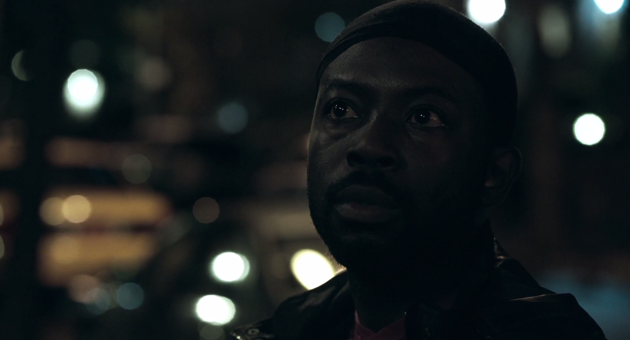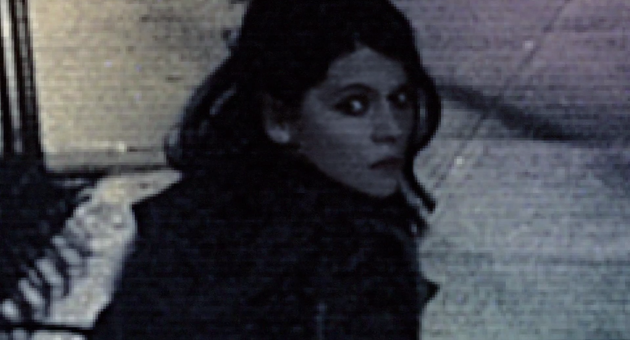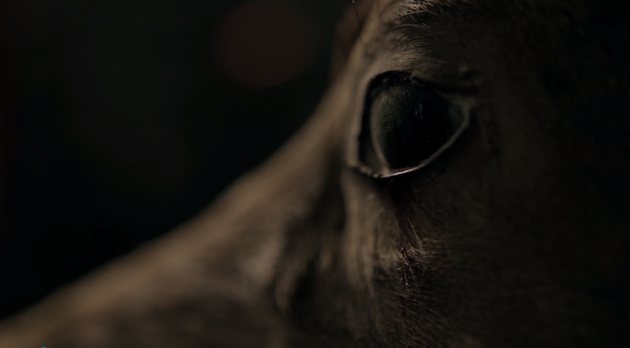How The Night Of Explored the Bias of Sight
One of the most memorable images of The Night Of, the now-concluded HBO miniseries that seemed only to ever deal in memorable images, was among its simplest. In Sunday’s finale, the lawyer John Stone (John Turturro) presented his client Nasir Khan (Riz Ahmed) with the difficult decision of whether to report his other lawyer, Chandra (Amara Karan), for kissing Naz. Doing so could result in a mistrial—which could be a good thing for Naz, but would ruin Chandra’s career.
Naz said almost nothing as he listened to Stone. But his eyes were steadily focused, glassy, reflecting the white light of a window across the room. “What do you care, you like her like you like Andrea?” Stone asked, referring to Chandra and the woman Naz is accused of killing. He told Naz to think about looking in the mirror, 20 years from now, regretting his choice today.
Naz didn’t move his head, just breathed deep, his chest slightly heaving. The reflection in his eyes looked like a glow from within. Stone understood. “Is that a yes?” It was.

The Night Of was a story about eyes: about first impressions that lead to stupid acts of generosity or monstrous acts of callousness, about surveillance as check on the imprecision of human sight and memory, about how people and systems trade an optimistic way of looking at the world for a jaded one over time. It signaled this theme by training the camera, time and again, on characters engaged in the simple act of seeing.
Recommended: Willy Wonka, Technology Critic
In the end, as many have pointed out, the show didn’t entirely succeed in what initially seemed like its goal of avoiding the storytelling shortcuts used by the likes of paperback murder mysteries and Law and Order episodes: There were coincidence and mistakes that defied belief, and parts of some episodes dragged. But overall The Night Of was a hypnotic masterpiece of craft, and the fact that it looked so good to watch reflected its underlying mission to make the viewer question what it means for something to do exactly that.

Naz found himself in trouble because of his sight: He let Andrea stay in his taxi because, as the prosecutor pointed out in the finale, she looked pretty. But he, in turn, was also saved by a kind of prettiness himself. Something about him made John Stone turn around in the police station on the night of his arrest. Something about him made a major law firm take his case. Something about him—“you smell like innocence”—made Rikers’s kingpin, Freddy (Michael K. Williams), take him under protection.
That “something” is partly class and upbringing, clearly—factors that, the show took pains to underline, separated Andrea and him from the average New York City murder victim and suspect who receive nowhere near comparable levels of media attention or lawyerly care. But that “something” also, it seemed, was ineffably tied to just the way Naz looks.
Reviewing the first few episodes of the show, I noted that his big eyes’ effect on other characters made me think of how Serial’s Sarah Koenig said that Adnan Syed’s “giant brown eyes, like a dairy cow” made him seem innocent. The Night Of took the fact of Naz’s magnetism a bit too far, perhaps, in having Chandra kiss him. A more effective illustration was the symbolism of Andrea’s cat, saved by John Stone from all the other abandoned animals by simple fact of right place, right time, and right cuteness.

In prison, though, Naz’s air of innocence was a liability—it made him a target. To get by, he physically altered himself: bulking up, shaving his head, changing his walk, getting tattoos. Of course, these things would only hurt his chances with the jury, a conundrum that encapsulates how the act of surviving in perilous social conditions can mark huge swaths of society for unsympathetic treatment by the legal system. John Stone was all too aware of how this works, which is why he minded what Naz wears to court, chided him for his ink, and abhorred the idea of him taking the stand.
Recommended: Did Colin Kaepernick Really Insult the Troops?
Chandra, meanwhile, still found Naz’s look—and background, and personality—so compelling as to believe the jury would be smitten if he testified. This was despite how bad the image of Naz presented by the prosecutors looked, and despite the bias engendered by him being a Muslim. The show resolved the conflict with a tie in the jury box, an outcome whose ambiguity reflected the state that Naz found himself in after the trial: alive but changed mostly for the worse, with the eyes of his community regarding him wearily. Notably, the one helpful thing he gained from prison was a hardness of the eyes, an ability to stare down rivals.

Looks mattered in other ways throughout The Night Of. John Stone’s eczema was in large part an image problem, as were his subway ads. The prosecutor Helen Weiss (Jeannie Berlin) changed from pumps to sneakers the second she didn’t have to be in front of a jury. The other potential suspects fit profiles more amenable to predetermined narratives of who commits murder. And the case itself boiled down to, as Helen said, a blindness: No one saw what happened at the time of the murder, save the murderer—and those deer eyes that the show kept cutting to.
Read more from The Atlantic:
This article was originally published on The Atlantic.
